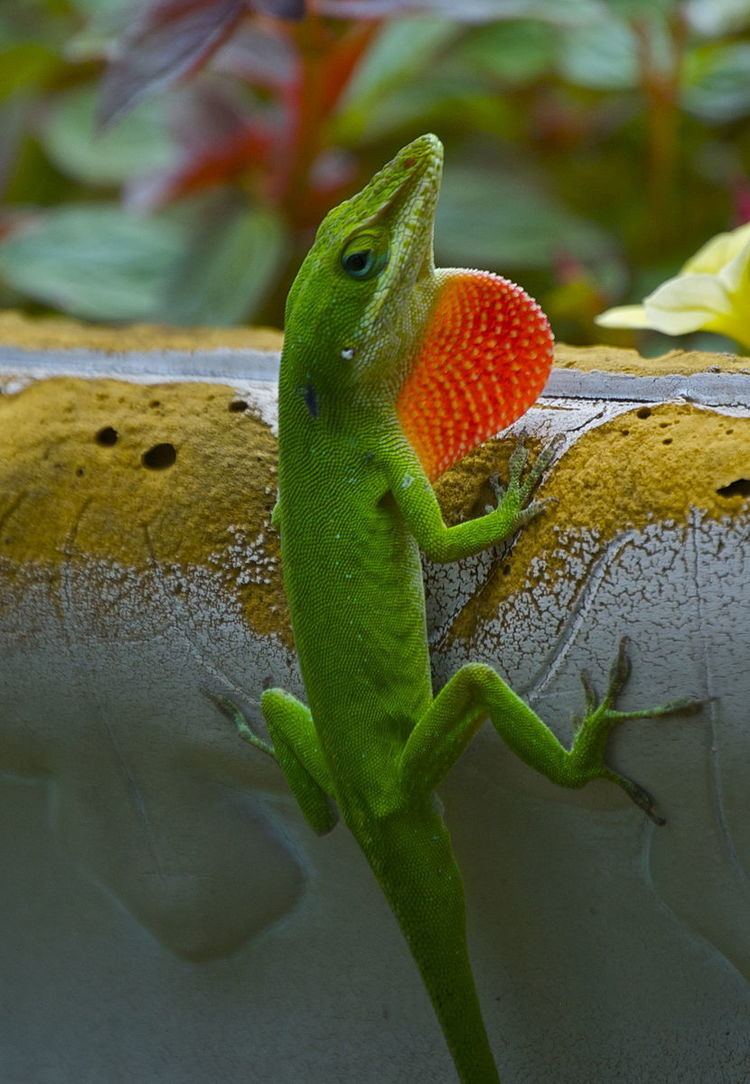 | ||
The Anolis carolinensis series is a clade or subgroup of closely related mid-sized trunk crown anoles within the genus Anolis. A total of thirteen species have been recorded, a few examples are listed below. This subgroup was recognized in 2012.
Contents
List of A.Carolinensis clade species
Origin
Many species of the carolinensis subgroup are remarkably obscure and, with the exception of a few species such as A.carolinensis, very little is known about its members or its origin. However, it is believed that the clade originated on Cuba (Glor 2005), with repeated overwater dispersion leading to multiple speciation events. It is believed that at least four separate speciation events would have been necessary to explain the diversity found within the Carolinensis subgroup; however, the origin of several species such as A.longiceps, A.brunneus and A.maynardi has not been fully understood. It is believed that the last common ancestor of the Carolinensis subgroup evolved approximately six million years ago; molecular dating currently supports this theory.
The sister subgroup to the carolinensus subgroup is the isolepis group, with three species (Glor 2005).
Morphology
In many respects the anoles of the Anolis carolinensis clade are typical trunk-crown anoles. They have a slender build, have large subdigital toe-pads to cling to vertical surfaces, are commonly found several metres above the ground and with the exception of A. brunneus and A. allisoni, are usually predominantly green in coloration to blend in with the vegetation in the canopy. The most notable morphological difference between the anoles of the Carolinensis clade and the rest of the genus Anolis is that Carolinensis group anoles typically have large, conspicuously elongated heads and extreme levels of sexual dimorphism.
Both these features are most pronounced in species found on small islands rather than on large landmasses such as Cuba and North America. One such species, Anolis maynardi, reaches the highest recorded level of facial elongation among anoles, and one of the highest levels of sexual dimorphism among iguanid lizards. The reason for the extreme levels of facial elongation in the Carolinensis anole species is not yet understood; however, it is worth noting that it is only males that reach these extreme levels of facial elongation.
Distribution
Anoles of this clade are primarily found on Cuba, where it is believed that the clade originated; however, the anoles of this subgroup are also native to several neighboring islands or territories such as Honduras (A. allisoni) and Hispaniola (A. porcatus). Several species are found exclusively on small islands neighbouring Cuba such as Navassa (A.longiceps) and the Cayman islands (A.maynardi).
Anolis carolinensis is native to the United States but has been introduced to areas of Japan. The Carolinensis group anole Anolis porcatus has also been introduced to parts of Florida.
